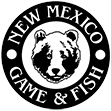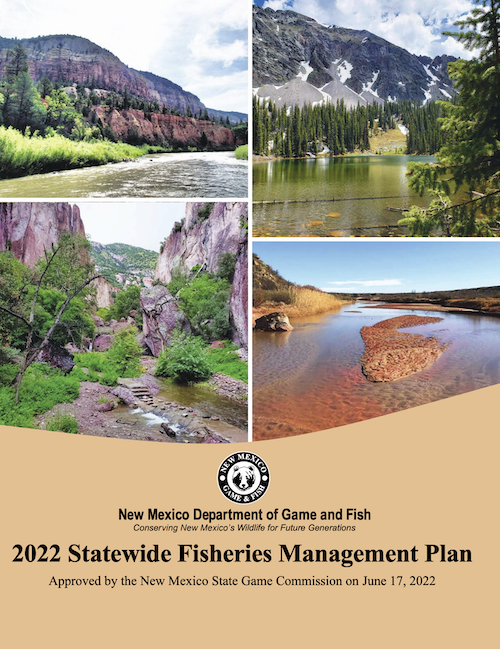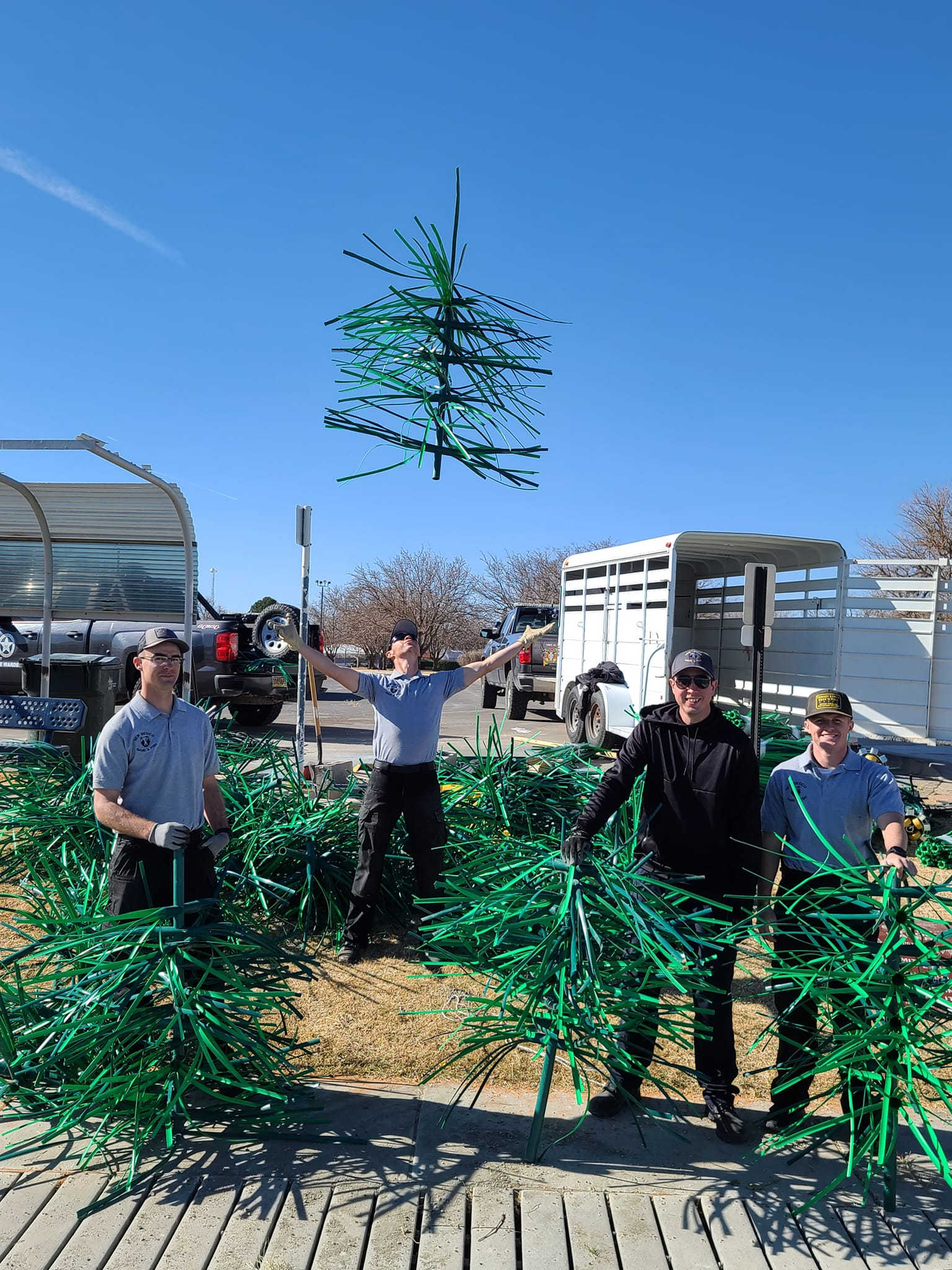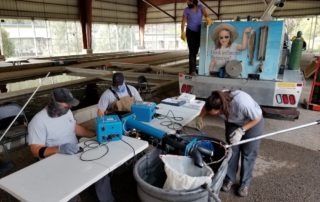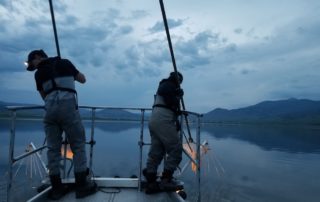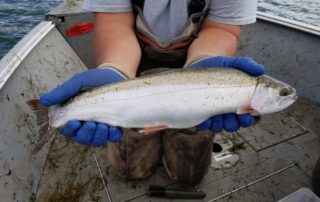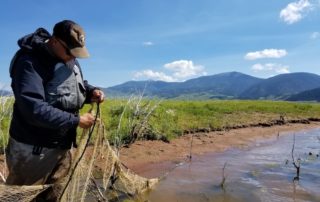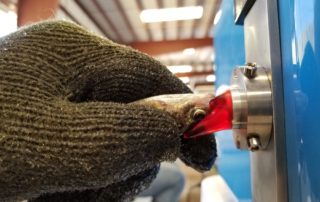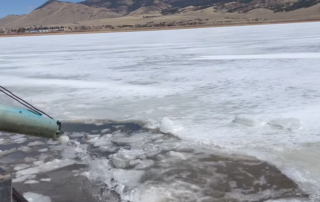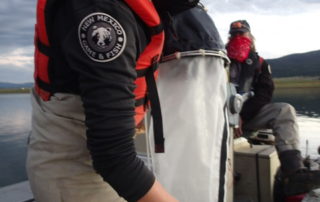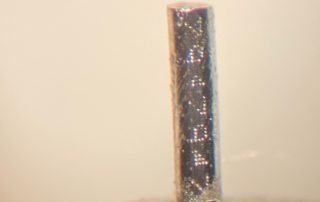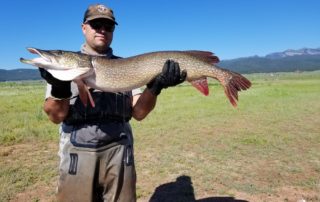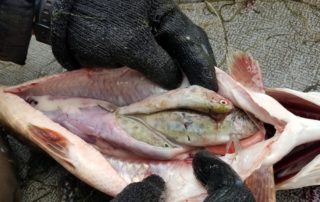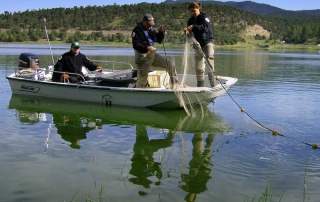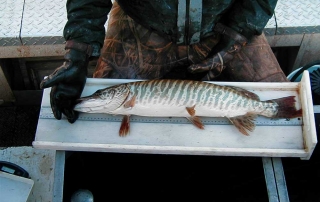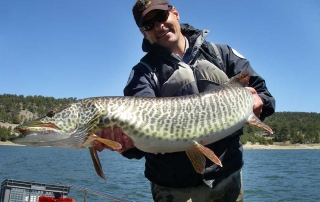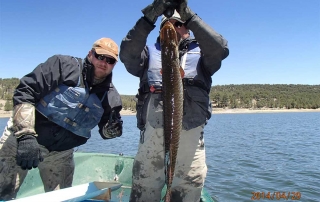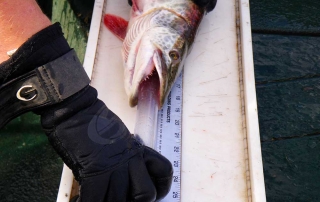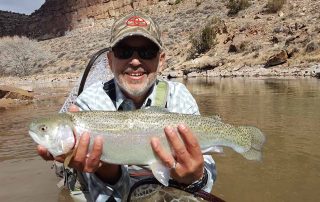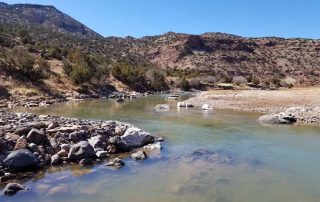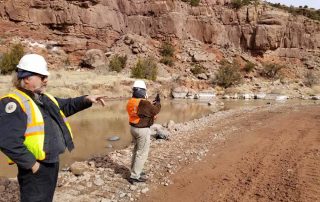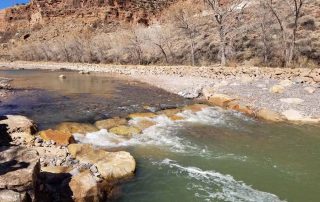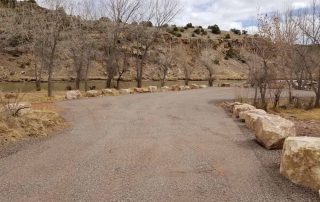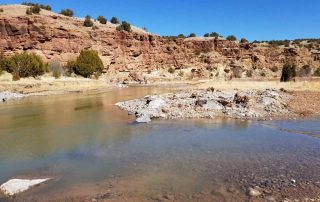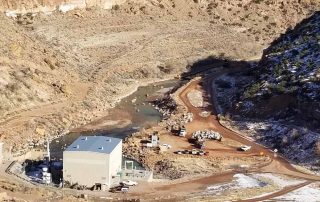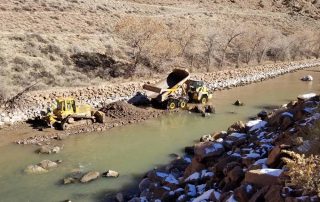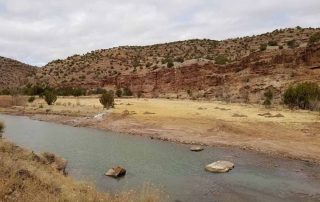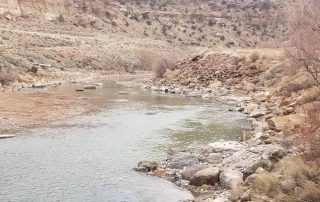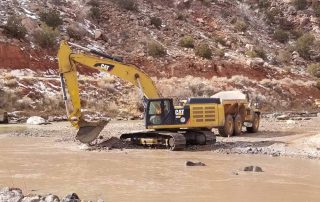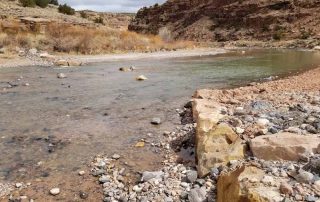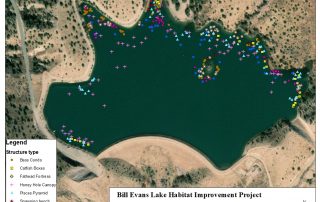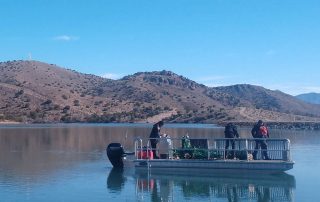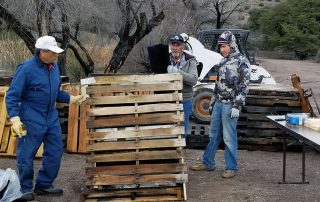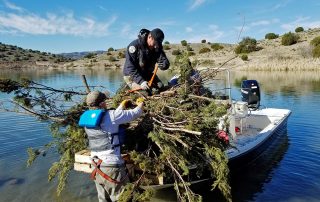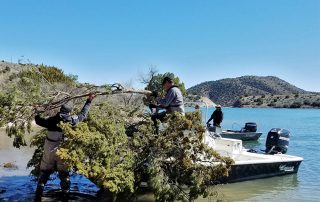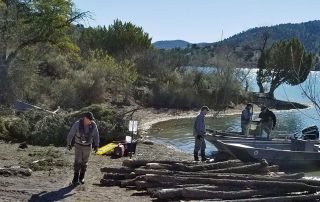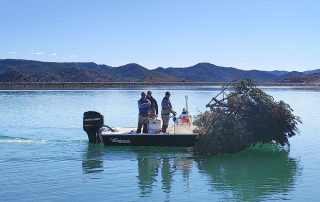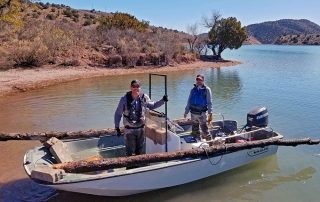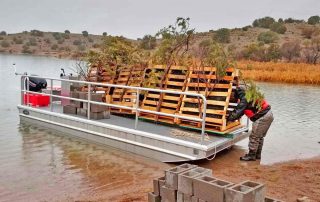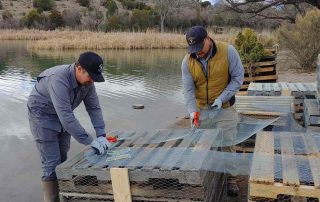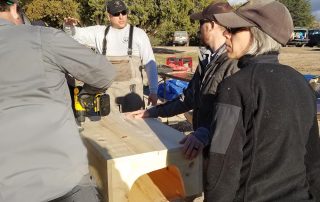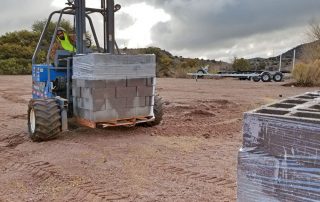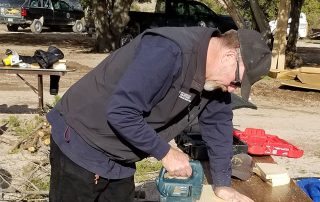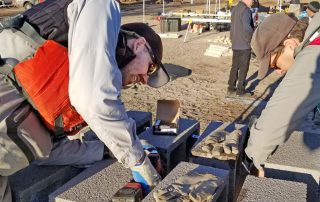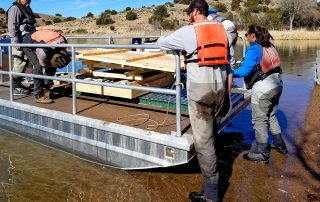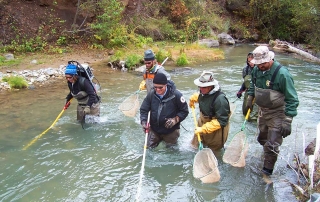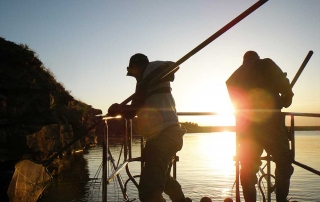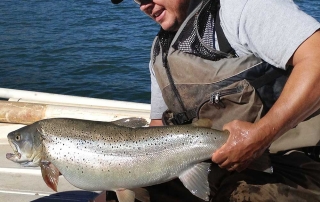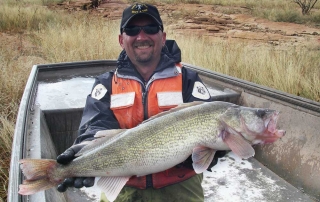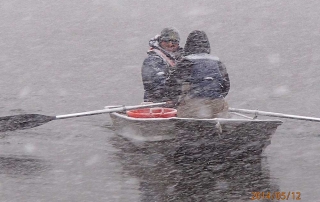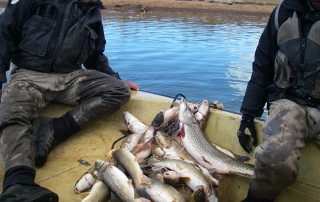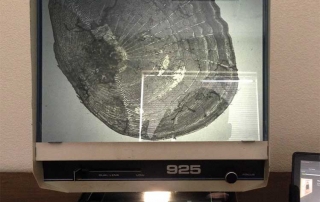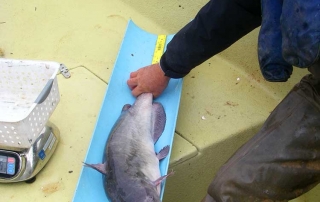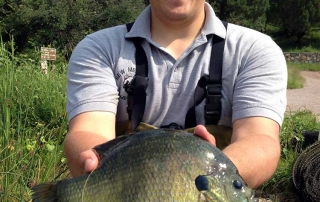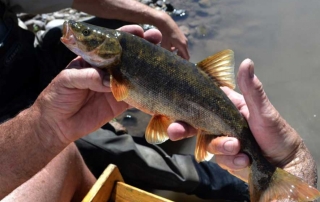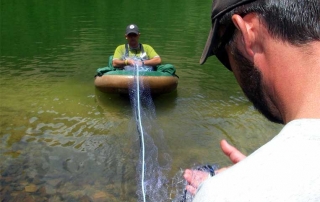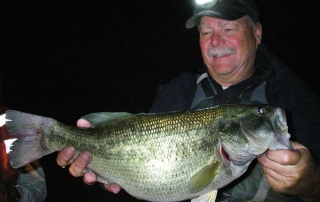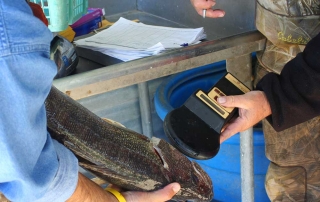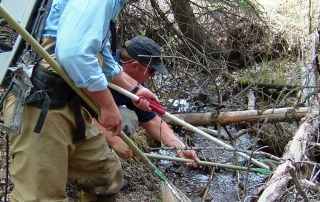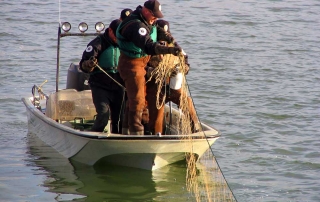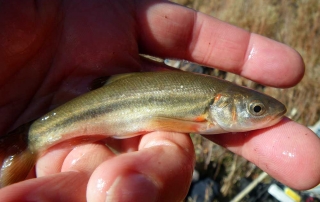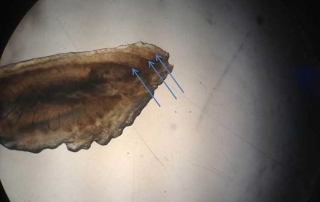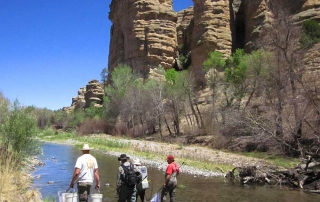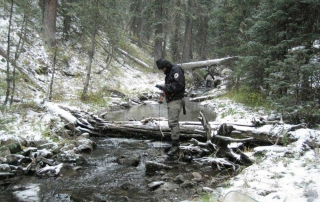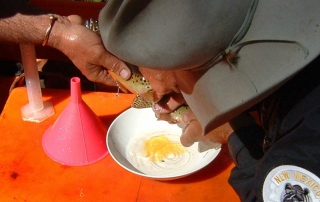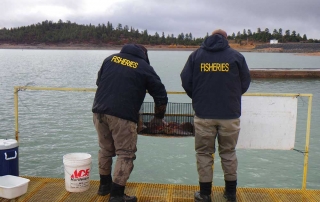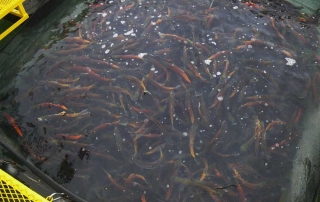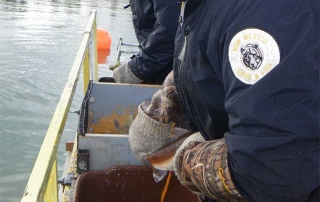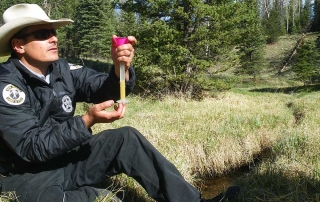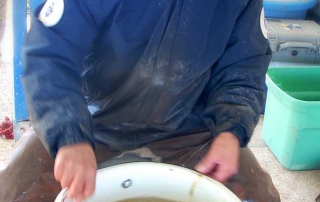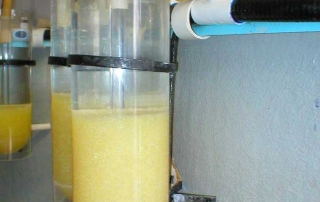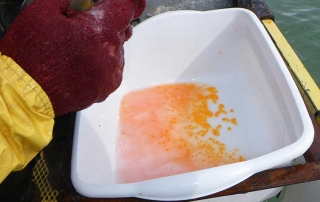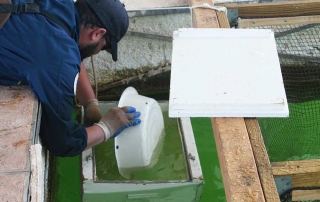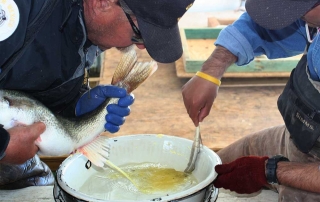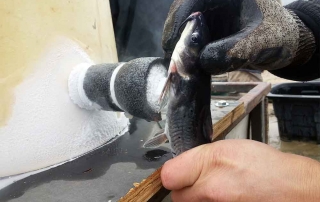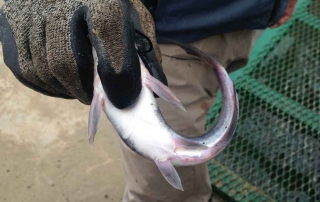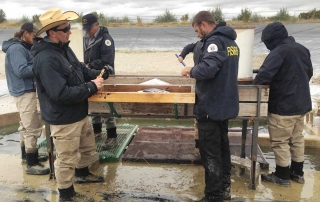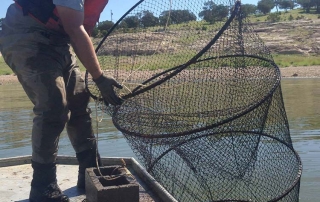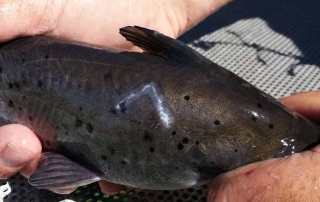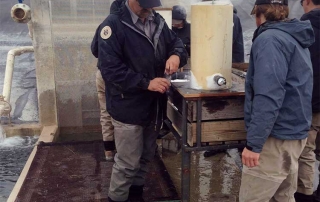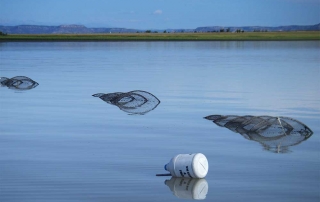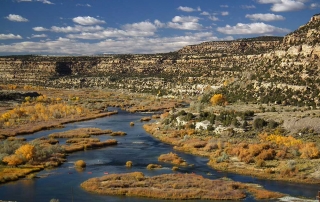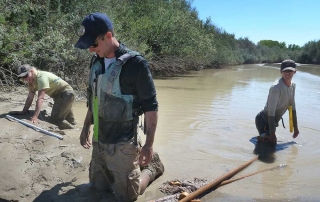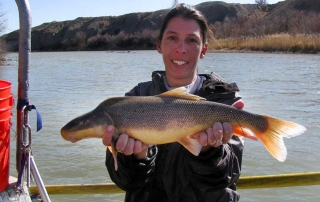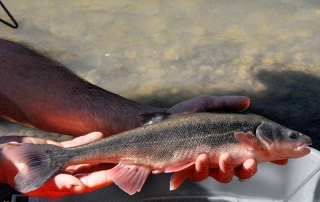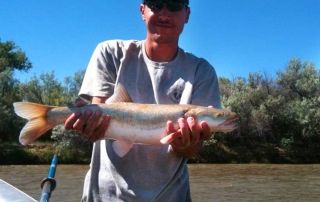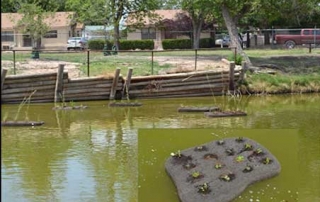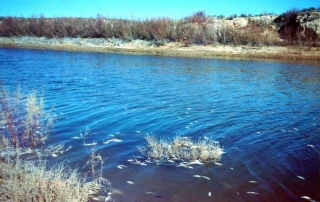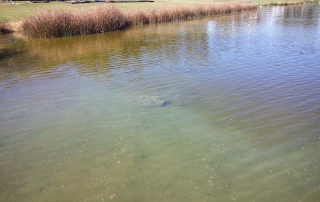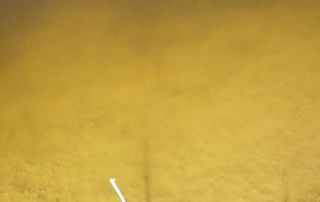NMDGF Fisheries Management
The Fisheries Management Division is responsible for the management of New Mexico’s aquatic resources. We have a very dedicated staff that is in the field year round managing both sport and native fish species. Their efforts improve fishing and ensure the long term sustainability of several aquatic species. Below are a few ongoing management and research projects conducted by the Fisheries Management Division.
Fisheries Management Plan
Carlsbad-Bataan Habitat Project
Click gallery below to see larger images with a description.
The Department has continued to improve fish habitat in small reservoirs by completing a project at Carlsbad Municipal and Bataan Lake in Carlsbad, NM. Department biologists and conservation officers worked with partners including NM B.A.S.S. Nation, the City of Carlsbad, and Friends of Reservoirs to build or purchase numerous structures that will provide crucial refuge and spawning habitat needed by fish and their prey. The project improved habitat for largemouth bass, spotted bass, channel catfish, rainbow trout, bluegills and many forage species by installing nursery habitat for juvenile fish and spawning and foraging habitat for adult fish. Locations of habitat structures are shown on the maps in the photo gallery along with pictures and descriptions of the different habitat structures that were installed, including: Eel Grass, Honey Hole, Honey Hole Canopy, Honey Hole Tree, American Fish Tree, Logs, Pallet Fortresses, and Tree Posts.
Eel Grass
A variety of different structures were constructed or purchased that consist of metal weights attached to high density strips of plastic, clustered in a fashion to resemble a dense bed of submerged aquatic plants like Eel grass a.k.a “celery grass”. Structures built with recycled materials were made by Earl Conway of NM B.A.S.S. Nation with funding support from Friends of Reservoirs. 100 different eel grass structures were installed in Carlsbad and Bataan Lake.
Honey Hole
A large structure made to resemble a complex dense bed of aquatic plants that provide nursery habitat for juvenile sportfish and the bait fish species they eat. The Honey Hole structure is a product purchased from Pond King®. 24 Honey Hole structures were sunk in Carlsbad and Bataan Lake.
Honey Hole Canopy
A plastic structure designed to float with multiple “arms” spread out in a circular pattern that allows for shade to be created underneath the floating plant like structure, a type of habitat that will benefit all life stages of numerous species of fish. The Honey Hole Canopy is a product purchased from Pond King®. 16 Honey Hole Canopys were installed in Carlsbad and Bataan Lake
Honey Hole Tree
A plastic structure that mimics a sunken tree with numerous” branches” that make a complex area where juvenile fish will find sanctuary and adult bass will use as a hunting ground and ambush their prey. The Honey Hole Tree is a purchased product from Pond King®. 78 Honey Hole Trees were installed in Carlsbad and Bataan Lake.
American Fish Tree
A plastic structure designed to mimic sunken trees or large branches that provide overhead cover and shade for juvenile and adult fish. A great structure for anglers to cast near to catch adult Largemouth Bass or Spotted Bass, the majority of these structures were sunk near the walking bridge at the southern end of Carlsbad Municipal Lake. The American Fish Tree is a purchased product from American Fish Tree®. 10 American Fish Tree structures were installed in Carlsbad Lake.
Log
A variety of different sizes of logs were sunk in a widespread area throughout the two reservoirs. Largemouth Bass and Spotted Bass prefer to build their nests near or under large logs to provide them with overhead cover and to allow the males to more easily defend their nests from egg predators (sunfish). Bass will also prefer to reside near or under the logs year-round in order to act as cover and as an ambush location. 143 Logs were installed in Carlsbad and Bataan Lake.
A special thank you to Robby Hall and TLC Tree Service in Ruidoso for their help in acquiring and loading ideal logs for this habitat project.
Pallet Fortress
These structures consist of 5 wooden pallets, stacked on top of each other with large branches sandwiched between a few of them to provide woody debris complex cavity spaces for juvenile fish. Because the bottom pallet is lifted 12” due to the weights, the underside will provide excellent overhead cover for adult catfish and bass. The structures will also provide an area for baitfish species to lay eggs on the underside of the wooden slats of the pallets, increasing prey forage species reproduction. 81 Pallet Fortress structures were installed in Carlsbad and Bataan Lake.
Tree Post
This habitat structure is designed to mimic a submerged tree. It adds woody debris habitat that is vertically complex rather than just lying flat on the lake bottom. Some of the tree posts were packed from top to bottom with tree branches to provide excellent habitat for juvenile fish, while some only had tree branches in the top half of the post to make excellent habitat for adult bass. 141 Tree Posts were installed in Carlsbad and Bataan Lake.
A special thank you to the City of Carlsbad and NM B.A.S.S Nation for providing tree branches for the Tree Posts and the Pallet Fortresses.
Eagle Nest Lake Fisheries Management
Click gallery below to see larger images with a description.
Rainbow trout are a highly valued sportfish in New Mexico. Based on recent surveys, 67% of anglers feel rainbow trout are the most important fish in Eagle Nest Lake. Therefore, biologists, anglers, and the local community are very concerned for the future of the rainbow trout fishery following the illegal introduction of predatory northern pike to Eagle Nest Lake in the mid-2000’s. The New Mexico Department of Game and Fish (NMDGF) has conducted a research project with the goal of learning effective strategies for continuing to manage rainbow trout in Eagle Nest Lake in spite of the unlawfully introduced northern pike. Department biologists have found that fingerling (about 3 inches long) rainbow trout no longer survive to a catchable (about 9 inches long) size at Eagle Nest Lake. As a result, fisheries staff have changed the stocking strategy from fingerlings to catchable sized rainbow trout and plan to stock most fish in the spring. NMDGF hosted a public meeting on April 13, 2022, to discuss Eagle Nest Lake fisheries history, management and research. Below is a link to this presentation.
Tiger Muskie Management
Click gallery below to see larger images with a description.
The New Mexico Department of Game and Fish uses tiger muskies to control undesirable fish species in Bluewater and Quemado reservoirs. Tiger muskies are extremely piscivorous (fish eating) and have significantly decreased populations of unwanted goldfish and white suckers in each reservoir. Tiger muskies also have provided a unique and popular fishing opportunity. Department fisheries biologists conduct tiger muskie surveys twice a year to monitor population levels, fish condition, diet, and stocking success to ensure successful long-term management of tiger muskies in New Mexico. Click here for more about fishing for tiger muskies.
Fish Habitat Improvement Projects
Click gallery below to see larger images with a description.
River Habitat: Rio Chama at Abiquiu Dam
As part of the Department’s effort to improve fish habitat throughout the state the Rio Chama project was completed spring 2020. The Department worked with multiple partners to complete the project including the United States Army Corps of Engineers, Bureau of Land Management, New Mexico State Land Office, Santa Fe National Forest, Trout Unlimited, and the National Fish and Wildlife Foundation. The project improved fish habitat and riparian health along two miles of the Rio Chama directly downstream of Abiquiu Dam. The project focused on improvements for resident trout species such as brown trout and rainbow trout and native fish species such as Rio Grande chub and Rio Grande sucker. Several techniques were used including building a low flow channel to increase habitat connectivity and winter habitat, installing several large boulder structures to increase habitat complexity and protect vulnerable stream banks, creating new flood plain areas and planting with native riparian vegetation, and adding several parking areas and road improvements to increase angler and hunter access. The project was designed by Riverbend Engineering LLC and built by WCA Construction LLC.
Click gallery below to see larger images with a description.
Reservoir Habitat Project: Bill Evans
The Department has begun to improve fish habitat in small reservoirs. The purpose of these projects is to improve the food web and recruitment of crucial forage and numerous sportfish species. The first habitat project improvement project took place on Bill Evans Lake, in the Southwest Region of the state, 18 miles west of Silver City. Department biologists worked with local volunteer anglers to improve fish habitat at Bill Evans Lake. This project involved building or purchasing habitat for numerous fish species and installing them in key areas of the lake. Logs, floating shade cover, large juniper tree branches and various structures made out of wood pallets were sunk in Bill Evans Lake in order to provide needed cover and spawning areas for both crucial forage and sportfish species. Largemouth bass, channel catfish, rainbow trout and bluegill will have more success at spawning and growing to adulthood, leading to higher abundances of larger fish. Locations of these habitat structures are shown on the map in the photo gallery. Honey Hole Canopy, Pisces Pyramid and Sunken Log structures are great places to fish for adult species using them as cover. Other habitat improvement projects will take place in reservoirs throughout the state.
Monitoring Fish Populations
Click gallery below to see larger images with a description.
Department staff spend a significant portion of their time monitoring fish populations throughout New Mexico. Survey methods, times of year and locations vary highly and can include:
● dragging a seine in the lower Pecos River for small-bodied fishes
● floating down the San Juan River with an electrofishing raft for Colorado pikeminnow.
Biologists collect several pieces of information such as population numbers, species composition, fish size distribution, fish condition, and age. Monitoring populations allows biologists to evaluate fishing regulations, stocking strategies, recovery efforts, and attaining management objectives. Population monitoring is a corner stone to fisheries management.
Angler Surveys
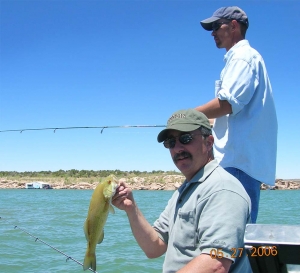
Angler with nice sized smallmouth bass from Conchas Lake
Monitoring New Mexico anglers is just as important as monitoring fish populations. This information allows the Department to understand where anglers are fishing, how many fish they are catching/harvesting, how satisfied they are with their fishing experience, and what fish species they prefer to catch. Biologists use several methods to collect angler data including: telephone surveys, internet surveys, and personal interviews with anglers while fishing. Angler surveys also help identify any potential issues and trends and ultimately help manage the fish populations to meet angler needs.
Wild Fish Egg Collection-“Spawning”
Click gallery below to see larger images with a description.
Department staff spawns wild fish from various populations throughout New Mexico annually. Some fish species such as walleye and kokanee salmon have very low reproductive success in the state. So, sustaining their populations and angling opportunity depends on egg collection and restocking with young fish. Spawns are conducted on other fish species such as Rio Grande cutthroat trout to capture genetics from relic populations into hatchery broodstock to be used for native fish restoration efforts. The spawning process is similar for all species which includes:
● gently squeezing eggs from the female and fertilizing with milt from the male
● hatching the fertilized eggs at the hatchery
● raising the fish to the desired size
● restocking the fish into the wild.
Catfish Stocking Evaluation by Mark and Recapture
Click gallery below to see larger images with a description.
The Rock Lake State Fishery Hatchery successfully raises thousands of channel catfish annually. Most of the catfish are stocked as juveniles into several lakes statewide. Stocking success can vary highly and Department biologists have initiated a long-term stocking evaluation to determine appropriate stocking rates and sizes. Biologists have developed a marking method that involves freeze-branding juvenile channel catfish. The brand will allow biologists to determine stocking success and growth of a particular year class after the fish are recaptured during population monitoring surveys. The goal of this study is to increase catfish fishing opportunities for New Mexico’s anglers.
San Juan River Management
Click gallery below to see larger images with a description.
The San Juan River is a unique and vital resource to New Mexico. The tailwater section below Navajo Dam provides world-class trout fishing that contributes millions of dollars to the state’s economy each year. The lower reaches provide habitat for federally listed fish species such as razorback sucker and the Colorado pikeminnow. Conservation of both these fisheries is paramount and Department staff spend a considerable amount of time monitoring, stocking, and enhancing habitat to ensuring the long-term persistence of this resource.
Golden Algae Monitoring and Mitigation
Click gallery below to see larger images with a description.
Golden algae is a single cell microscopic organism that thrives in salty high nutrient water. It typically blooms during the winter months and produces fish toxins that can cause massive fish kills. Golden algae was first detected in New Mexico in 1988 along the lower Pecos River. Since that time it has caused several fish kills near Roswell and Carlsbad. The Department has worked cooperatively with New Mexico BASS Nation and Roswell schools on a golden algae mitigation research project. The project is investigating the use of aquatic plants to improve water quality so golden algae can be controlled. Biologists also monitor lakes and ponds for golden algae to determine if a water is suitable for fish stocking.
Conservation Agreements and Recovery Plans
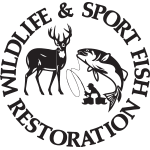 Sport Fish Restoration Act
Sport Fish Restoration Act
A 10-percent federal excise tax on your purchase of fishing equipment and motor boat fuel helps states individually promote sport fisheries. This includes acquiring easements or leases for public fishing, funding hatchery and stocking programs, supporting aquatic education programs, and improving boating facilities for anglers.
